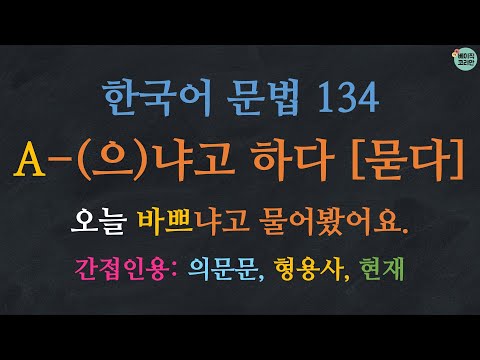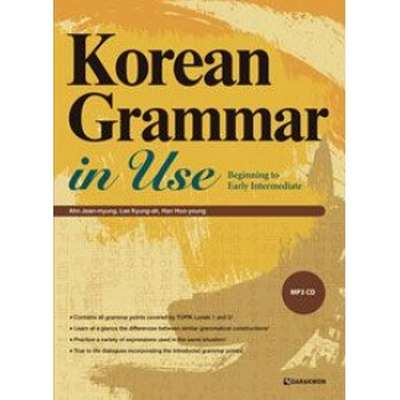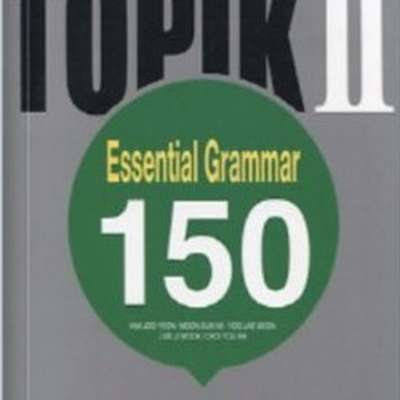냐고 하다 grammar
1. 물음을 나타내는 “-냐고 하다”의 활용 (Usage of “-냐고 하다” to represent a question)
냐고 하다 is used to ask a question. It can be used in various situations, such as when seeking confirmation, asking for information, or expressing curiosity or doubt. It is a versatile grammatical form that can be applied to different sentence structures and verb forms.
2. “-냐고 하다”와의 차이점 (Differences between “-냐고” and “-냐고 하다”)
“-냐고” and “-냐고 하다” are both used to represent a question, but they have slight differences in usage. “-냐고” is a shorter form and is often used in casual conversations or when the speaker wants to sound more relaxed or informal. On the other hand, “-냐고 하다” is a more formal form that is suitable for polite or professional situations. It is also used when the speaker wants to emphasize their request for confirmation or clarification.
3. “냐고 하다”의 문법적 특징 (Grammatical characteristics of “냐고 하다”)
“냐고 하다” can be used in both noun forms and verb forms. When used in noun forms, it is attached to a noun to form a question. For example, “무슨 일인지 물어보다” (Asking what’s going on) can be transformed into “무슨 일인지 냐고 묻다” (Asking what’s going on). When used in verb forms, it is attached to the verb stem to indicate a question. For example, “먹다” (to eat) can transform into “먹느냐고 묻다” (Asking if/whether one is eating).
4. “냐고 하다”의 문장 구조 (Sentence structure of “냐고 하다”)
The sentence structure of “냐고 하다” consists of a main sentence and an interrogative sentence. The main sentence provides the context or the topic of the question, while the interrogative sentence asks the question itself. For example, in the sentence “어디로 가는지 냐고 물어봐” (Ask where one is going), “어디로 가는지” is the main sentence, and “냐고 물어봐” is the interrogative sentence.
5. “냐고 하다”의 위치와 사용 예시 (Position and examples of usage of “냐고 하다”)
“냐고 하다” can be placed at different positions within a sentence, depending on the emphasis or focus the speaker wants to convey. It can be placed before or after the main sentence, or it can be placed at the end of the sentence. For example, “왜 그렇게 행복한지 물어봐봐” (Ask why one is so happy) can be transformed into “왜 그렇게 행복한지 물어봐냐고” or “왜 그렇게 행복한지 냐고 물어봐”.
Here are some more examples of “냐고 하다” in different sentence structures:
– “네가 그렇게 한거냐고 물어보겠어” (I will ask if/whether you did that)
– “아무 힘들지 않느냐고 물어봤어” (I asked if/whether it wasn’t difficult at all)
– “왜 그렇게 피곤한지 물어보려고 했는데” (I tried to ask why one is so tired)
6. “냐고 하다”의 의미 전달 (Conveyance of meaning with “냐고 하다”)
“냐고 하다” not only represents a question but also conveys the intention and attitude of the speaker. Depending on the tone or context, it can express curiosity, doubt, suspicion, or even irritation. The intonation and emphasis placed on “냐고” can also affect the meaning conveyed. For example, “왜 그렇게 피곤한지 냐고 물어봐” can sound more accusatory or judgmental if the speaker emphasizes “냐고”.
7. “냐고 하다”의 동사와 형용사와의 결합 (Combination of “냐고 하다” with verbs and adjectives)
“냐고 하다” can be combined with various verbs and adjectives to form questions. When combined with verbs, it is attached to the verb stem. For example, “자다” (to sleep) can transform into “자느냐고 묻다” (Asking if/whether one is sleeping). When combined with adjectives, it is attached to the adjective stem. For example, “행복하다” (to be happy) can transform into “행복하느냐고 묻다” (Asking if/whether one is happy).
8. “냐고 하다”와 다른 문법 형태의 문장과의 조합 (Combination of “냐고 하다” with other grammar forms)
“냐고 하다” can be combined with other grammar forms to create more complex sentences or expressions. For example, it can be combined with the quotation marker “라고 하다” to indicate a reported question. For example, “어떻게 그런 결론에 도달했느냐고 물었어” (I asked how one reached such a conclusion).
9. 주의할 점과 “냐고 하다”의 사용 팁 (Precautions and tips for the usage of “냐고 하다”)
When using “냐고 하다”, it is important to pay attention to the formality level of the situation. “-냐고” is more suitable for casual conversations, while “-냐고 하다” is more appropriate for formal or polite situations. It is also important to consider the relationship with the person being addressed and to use the proper honorifics when necessary.
In addition, the use of intonation and emphasis can greatly affect the meaning conveyed. The speaker should be mindful of the intended tone and adjust the pronunciation accordingly. It is also helpful to practice using different sentence structures and verb forms to become more proficient in using “냐고 하다” effectively.
In conclusion, “냐고 하다” is a useful grammar structure in Korean that is used to ask questions and seek clarification or confirmation. By understanding its usage, differences compared to similar expressions, grammatical characteristics, sentence structure, placement, meaning conveyance, combination with verbs and adjectives, combination with other grammar forms, and some tips and precautions, learners of Korean can effectively incorporate “냐고 하다” into their communication skills.
사용자가 검색한 키워드: 냐고 하다 grammar 냐고 grammar, a- 으 냐고 하다 묻다 v-느냐고 하다 묻다 n 이 냐고 하다 묻다 grammar, 느냐고 하다 grammar, 라고 하다 grammar, 냐고 하다 意味, 으 냐고/느냐고 하다, 자고 하다, 으라고 하다 grammar
Categories: Top 81 냐고 하다 grammar
한국어배우기 | 한국어 문법 134: 간접인용 (의문문) A-으냐고 하다/냐고하다 (한국어 간접화법, indirect quotation) | Korean Grammar
여기에서 자세히 보기: muadacsan3mien.com
냐고 grammar
Korean grammar can be quite intricate, and one aspect that often perplexes learners is the use of sentence-ending particles. Among these particles, “냐고” (nyago) stands out as a unique construction that conveys questions with a touch of curiosity or emphasis. In this article, we will dive deep into the usage and nuances of 냐고 grammar, examining its structure, context, and providing useful examples to help you grasp its essence effortlessly.
Understanding the Structure of 냐고 Grammar
냐고 is derived from the interrogative particle “냐” (nya) and the quotative particle “고” (go). The interrogative particle “냐” was traditionally used to ask questions in a formal and assertive manner, but when combined with “고,” it acquires a softer tone with curiosity or emphasis. While “냐” on its own can be used to ask questions, 냐고 is more commonly employed in a sentence-ending pattern.
냐고 is utilized to express indirect questions or to seek clarification with a sense of wonder, surprise, or doubt. In simple terms, it adds a touch of curiosity or emphasis to the sentence, allowing the speaker to express their feelings or convey a certain mood effectively.
Context and Usage of 냐고 Grammar
1. Seeking Clarification:
냐고 is frequently used when seeking clarification or asking for more details. For instance, if someone says, “이 책은 좋아?” (I chaekeun joh-a? – Do you like this book?), you can respond with “냐고?” (nyago? – Do you really? / Why?). By adding 냐고 to the end of the sentence, you express your curiosity or doubt about their statement, urging them to provide more information or elaboration.
2. Confirming Information:
냐고 can also be employed to confirm information or validate a particular fact. For example, if someone tells you, “오늘 비가 올 것 같아.” (Oneul biga ol geot gata. – It seems like it will rain today), you can respond with “비가 올 거냐고?” (Biga ol geonyago? – It will rain?). Here, adding 냐고 expresses your doubt or surprise, asking for confirmation of their statement.
3. Expressing Surprise or Indignation:
냐고 can convey surprise, shock, or indignation depending on the context. For instance, if someone says, “고양이가 강아지보다 크다.” (Goyangiga gangajiboda keuda. – Cats are bigger than dogs), you can respond with “고양이가 강아지보다 크냐고?” (Goyangiga gangajiboda keunyago? – Are cats really bigger than dogs?). In this case, 냐고 is used to express astonishment or disbelief towards the statement made.
4. Expressing Wonder or Curiosity:
냐고 is often employed to convey wonder or curiosity about a specific topic. For instance, if someone says, “그 영화 정말 재밌었어.” (Geu yeonghwa jeongmal jaebsseosseo. – That movie was really fun), you can respond with “정말 재밌었냐고?” (Jeongmal jaebsseotnyago? – Was it really fun?). Here, 냐고 is used to express your curiosity or to seek agreement about the fun factor of the movie.
FAQs about 냐고 Grammar
Q1: Can 냐고 be used in formal settings?
While 냐고 is generally regarded as a more casual and informal language feature, it can still be used in formal settings to express curiosity or emphasize certain points. However, it is essential to consider the level of politeness required in a given situation. In formal writing or when addressing someone with higher social status, using more formal language alternatives might be more appropriate.
Q2: Are there any similar particles or grammar patterns?
Yes, there are particles with similar functions, such as “느냐” (neunya) or “민냐” (minnya), which are extensions of 냐고. These particles are often used to express surprise or wonder in a more exaggerated manner. Additionally, the particle “거냐” (geonya) is commonly used in informal speech to ask for confirmation or agreement.
Q3: Can 냐고 be combined with other sentence-ending particles?
Yes, 냐고 can be combined with other sentence-ending particles to introduce further nuances or emphasis. For instance, “냐고 말이야” (nyago maliya) combines the emphasis particle “말이야” (mariya) with 냐고, expressing a strong sense of curiosity, surprise, or doubt.
Q4: How can I practice using 냐고 effectively?
To practice using 냐고, it is recommended to engage in conversations with native Korean speakers or participate in language exchange programs. Paying attention to how native speakers use 냐고 in everyday situations and gradually incorporating it into your own conversations will help you become more comfortable with its usage.
In conclusion, 냐고 is a captivating sentence-ending particle in Korean that adds curiosity, emphasis, or doubt to a statement. Understanding its structure and context is crucial for using it effectively. By incorporating 냐고 into your Korean conversations, you can convey a wide range of emotions and engage in more nuanced expressions. Happy learning!
a- 으 냐고 하다 묻다 v-느냐고 하다 묻다 n 이 냐고 하다 묻다 grammar
The -으 냐고 하다 form is used to ask a question in a neutral or objective manner. This ending is attached to the end of a verb stem, and the verb itself is usually in the past tense. For example, consider the sentence “뭐 했으냐고?” (What did you do?). Here, the verb 했으냐고 (did) is combined with the question-forming ending -으냐고, resulting in a politely-phrased question.
On the other hand, the -느냐고 하다 form carries a nuance of urgency or concern. It is also used to ask a question, but it emphasizes the importance of the answer. This ending is attached to the end of the verb stem, just like -으 냐고 하다. For instance, you can say “왜 울고 있느냐고?” (Why are you crying?). The verb phrase 울고 있느냐고 (are crying) conveys a sense of urgency, implying the speaker’s sincere interest in knowing the reason behind the person’s tears.
Lastly, the -이 냐고 하다 form is used when the speaker wants to confirm or verify something. It is often employed in situations where the speaker is unsure about an event or fact and seeks clarification. Similar to the previous forms, -이 냐고 하다 is attached to the end of the verb stem. An example sentence would be “안 갔다니까, 진짜 안 갔 이냐고?” (You said you didn’t go. Did you really not go?). Here, the use of -이냐고 emphasizes the speaker’s doubt and the desire to confirm the truth.
Now, let us move on to some frequently asked questions about -으 냐고 하다, -느냐고 하다, and -이 냐고 하다:
Q: Can these forms only be used in formal or polite speech?
A: No, these sentence endings are versatile and can be used in both formal and informal contexts. However, it is important to note that -이 냐고 하다 is usually more commonly used in informal settings.
Q: Do these sentence endings only apply to verbs?
A: No, although verbs are the most common part of speech to which these forms are attached, they can also be used with adjectives and nouns.
Q: Are there any other sentence endings that serve similar purposes?
A: Yes, besides -으 냐고 하다, -느냐고 하다, and -이 냐고 하다, there are a few other forms that can be used to ask questions or seek information, such as -는지, -나, or simply ending the sentence with a question mark.
Q: Do these forms change depending on the tense of the verb?
A: Yes, the tense of the verb should be appropriately reflected in these endings. For instance, if the verb is in the present tense, you would use -느냐고 하냐고, instead of -느냐고 하다.
Q: Can these forms be used in written Korean?
A: Yes, these forms are appropriate for both spoken and written Korean; however, it is worth noting that -이 냐고 하다 may be used less frequently in formal writing.
In conclusion, the -으 냐고 하다, -느냐고 하다, and -이 냐고 하다 grammar forms are powerful tools in Korean language for asking questions, seeking information, or confirming facts. By understanding their differences and nuances, learners can effectively communicate and express their intentions in a clearer manner. Remember to practice using these sentence endings in various contexts to become more comfortable with them. Happy learning!
주제와 관련된 이미지 냐고 하다 grammar

냐고 하다 grammar 주제와 관련된 이미지 5개를 찾았습니다.
![A-(으)냐고 하다[묻다], V-느냐고 하다[묻다], N(이)냐고 하다[묻다] Korean grammar A-(으)냐고 하다[묻다], V-느냐고 하다[묻다], N(이)냐고 하다[묻다] Korean Grammar](https://img1.daumcdn.net/thumb/R800x0/?scode=mtistory2&fname=https%3A%2F%2Fblog.kakaocdn.net%2Fdn%2FbrVcBK%2Fbtq8JjEcIjy%2FQRFkgi8oIFAdpLcDkz5NB1%2Fimg.png)
![Ngữ pháp] 냐고 하다 Lời nói gián tiếp (Câu nghi vấn) - Hàn Quốc Lý Thú Ngữ Pháp] 냐고 하다 Lời Nói Gián Tiếp (Câu Nghi Vấn) - Hàn Quốc Lý Thú](https://hanquoclythu.com/wp-content/uploads/2018/02/EB8390EAB3A0ED9598EB8BA42.jpg)




![V~ㄴ/는다고, A~다고 하다 [ Korean Grammar ] | TOPIK GUIDE V~ㄴ/는다고, A~다고 하다 [ Korean Grammar ] | Topik Guide](https://www.topikguide.com/wp-content/uploads/2021/08/20210812_154327_0001.jpg)
![한국어 중급 [문법] 7. -느냐고 하다, -(으)냐고 하다, (이)냐고 하다 - YouTube 한국어 중급 [문법] 7. -느냐고 하다, -(으)냐고 하다, (이)냐고 하다 - Youtube](https://i.ytimg.com/vi/3R4S2hPJ3uc/maxresdefault.jpg)
![My Korean Grammar 2 알토란 한국어 문법 2 미리보기 [교보 eBook] My Korean Grammar 2 알토란 한국어 문법 2 미리보기 [교보 Ebook]](https://preview.kyobobook.co.kr/preview/002/epb/026/4801186453026/images/28_fmt.jpeg)


![Ngữ pháp] 냐고 하다 Lời nói gián tiếp (Câu nghi vấn) - Hàn Quốc Lý Thú Ngữ Pháp] 냐고 하다 Lời Nói Gián Tiếp (Câu Nghi Vấn) - Hàn Quốc Lý Thú](https://hanquoclythu.com/wp-content/uploads/2019/03/cropped-123.jpg)




![Ngữ pháp] 냐고 하다 Lời nói gián tiếp (Câu nghi vấn) - Hàn Quốc Lý Thú Ngữ Pháp] 냐고 하다 Lời Nói Gián Tiếp (Câu Nghi Vấn) - Hàn Quốc Lý Thú](https://hanquoclythu.com/wp-content/uploads/2018/02/Ng%E1%BB%AF-ph%C3%A1p-%EB%83%90%EA%B3%A0-%ED%95%98%EB%8B%A4-L%E1%BB%9Di-n%C3%B3i-gi%C3%A1n-ti%E1%BA%BFp-C%C3%A2u-nghi-v%E1%BA%A5n.jpg)

![Ngữ pháp] 다고 하다 Lời nói gián tiếp (Câu tường thuật) - Hàn Quốc Lý Thú Ngữ Pháp] 다고 하다 Lời Nói Gián Tiếp (Câu Tường Thuật) - Hàn Quốc Lý Thú](https://2.bp.blogspot.com/-__KtDtQrckc/W5yTvyxcF4I/AAAAAAAAGLI/Wzn9lTXJUV4jLL3fAu4Ec287lyuwT07xACLcBGAs/s640/%25EB%258B%25A4%25EA%25B3%25A0%25ED%2595%2598%25EB%258B%25A4%2B2.png)

![Ngữ pháp] 냐고 하다 Lời nói gián tiếp (Câu nghi vấn) - Hàn Quốc Lý Thú Ngữ Pháp] 냐고 하다 Lời Nói Gián Tiếp (Câu Nghi Vấn) - Hàn Quốc Lý Thú](https://hanquoclythu.com/wp-content/uploads/2022/04/%EB%8A%94%EB%8D%B0.%EC%9D%80%EB%8D%B0.%E3%84%B4%EB%8D%B0-%EB%8B%B9%EC%97%B0%ED%9E%88-...-%EC%97%88%EC%A7%80.%EC%95%98%EC%A7%80.%EC%98%80%EC%A7%80.-218x150.png)




![Ngữ pháp] 냐고 하다 Lời nói gián tiếp (Câu nghi vấn) - Hàn Quốc Lý Thú Ngữ Pháp] 냐고 하다 Lời Nói Gián Tiếp (Câu Nghi Vấn) - Hàn Quốc Lý Thú](https://hanquoclythu.com/wp-content/uploads/2022/04/%EC%9D%84.%E3%84%B9-%EB%95%8C%EB%A7%88%EB%8B%A4-...-%EB%8D%94%EB%9D%BC%EA%B3%A0%EC%9A%94.-218x150.png)

Article link: 냐고 하다 grammar.
주제에 대해 자세히 알아보기 냐고 하다 grammar.
- [Ngữ pháp] 냐고 하다 Lời nói gián tiếp (Câu nghi vấn)
- -냐고 하다 grammar = asked ~quoting one’s question indirectly
- [Ngữ pháp] 냐고 하다 Lời nói gián tiếp (Câu nghi vấn)
- A-(으)냐고 하다[묻다], V-느냐고 하다[묻다], N(이)냐고 하다[묻다 …
- Lesson 53: Quoting Different Endings: ~자고, ~(으/느)냐고
- 냐고 하다
- 라고/라는/다고/다는/자고/냐고 하다 [ Korean Grammar ]
더보기: blog https://muadacsan3mien.com/tin-tuc